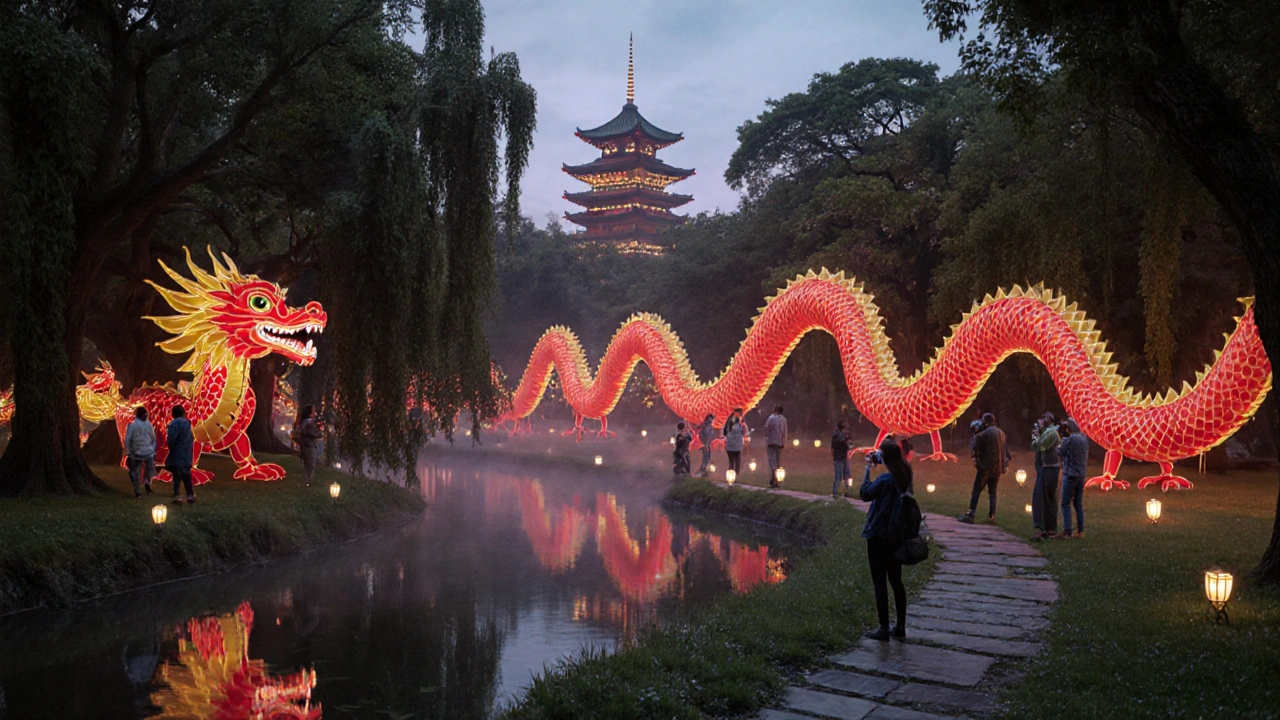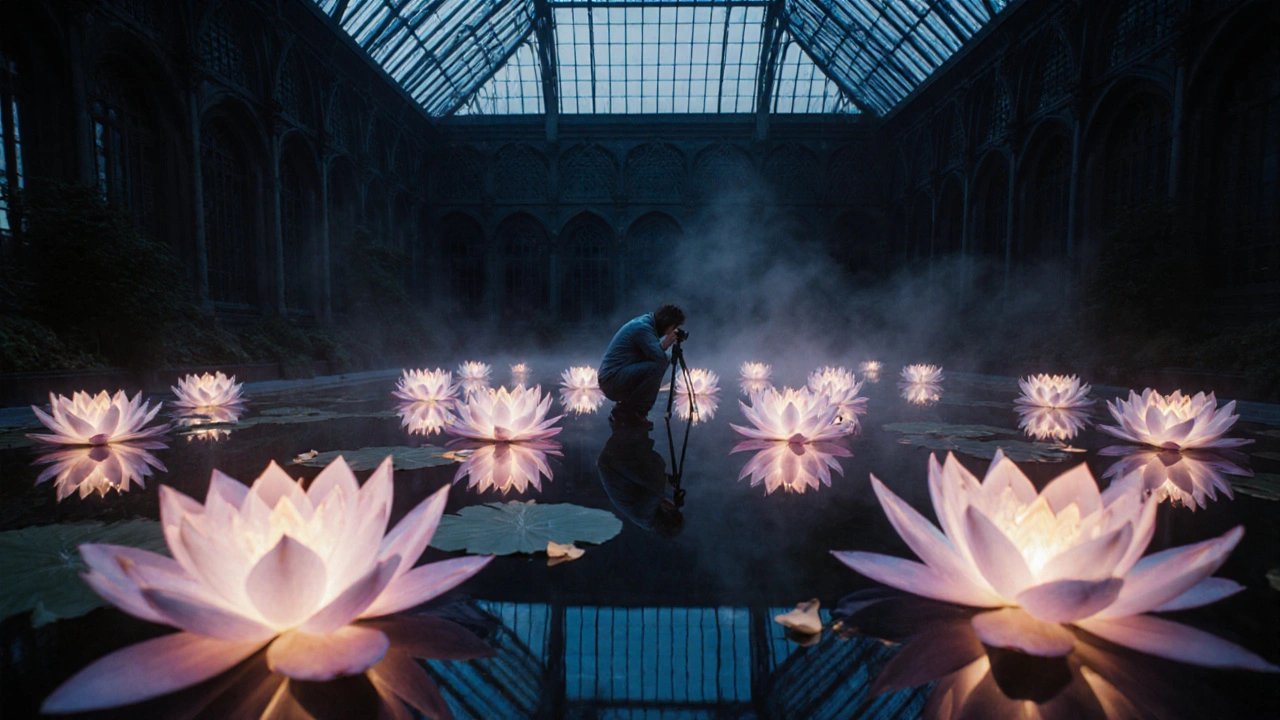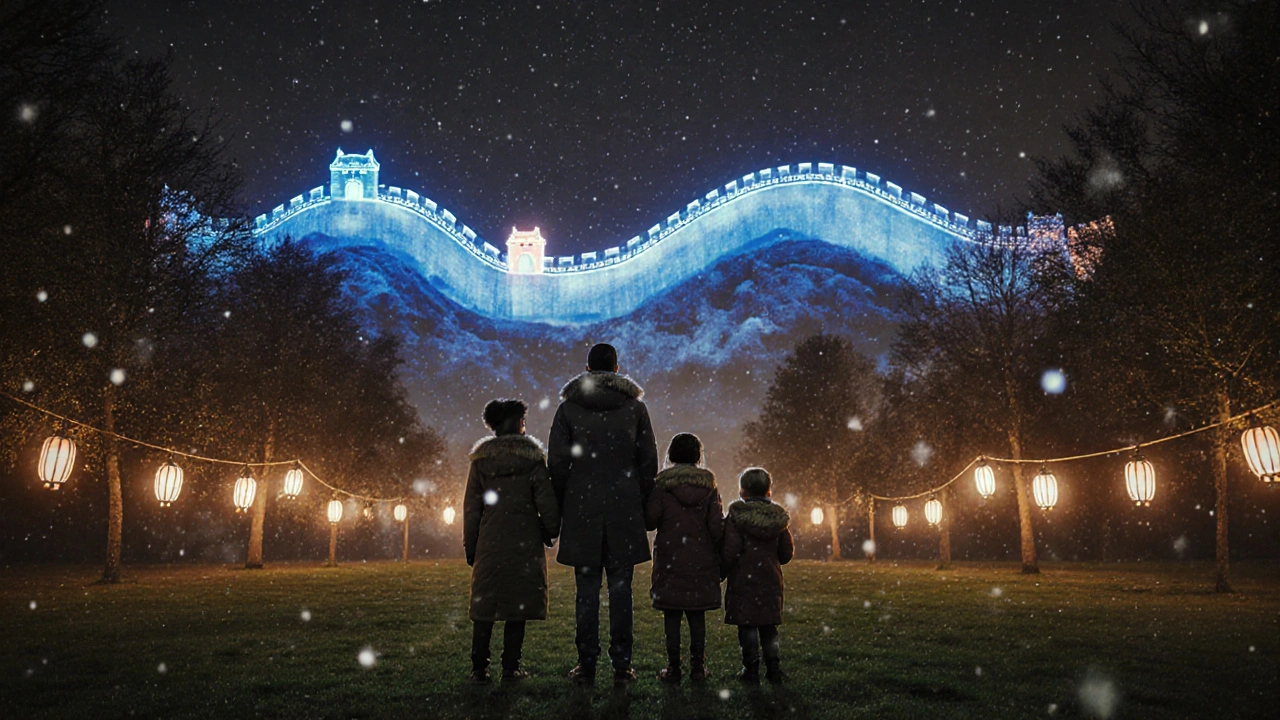
The Chinese Lantern Festival London 2025 isn’t just another light show-it’s the biggest celebration of Chinese New Year outside Asia, turning Kew Gardens into a glowing wonderland of handcrafted lanterns, music, and food. If you’re planning to go, you’re not just attending an event-you’re stepping into a 2,000-year-old tradition that’s been reimagined for modern London. This year, expect over 60 massive lantern installations, dozens of cultural performances, and crowds that know exactly where to stand for the perfect shot.
Where the Festival Happens-Only One Place
There’s only one location for the Chinese Lantern Festival in London: Kew Gardens. It’s been the home of this event since 2017, and for good reason. The 300-acre botanical site offers winding paths, historic glasshouses, and natural clearings that turn into perfect stages for lanterns shaped like dragons, pandas, and phoenixes. You won’t find this festival anywhere else in the city-no parks, no city squares, no pop-ups. If someone tells you it’s at Hyde Park or Greenwich, they’re wrong. Kew Gardens is the only spot.
The entrance is at the Kew Green Gate, near Kew Bridge Station. The festival runs from February 14 to March 16, 2025, with sessions starting at 5:30 PM and ending at 9:30 PM. Tickets sell out fast, especially on weekends. Buy them online at least two weeks ahead. Walk-up tickets are rare after mid-February.
Best Times to Go for Photos
If you want to capture the lanterns without a sea of phone screens in your frame, timing matters more than you think. The first hour after opening-5:30 PM to 6:30 PM-is your golden window. The light is still soft, the paths are less crowded, and the lanterns are just turning on. You’ll get clean shots of the giant dragon winding through the trees without strangers walking into your lens.
Avoid 7:30 PM to 8:30 PM. That’s when tour groups arrive, families cluster around the most popular lanterns, and everyone’s trying to get the same selfie. If you can’t go early, aim for the last hour before closing. By 8:30 PM, many people start leaving, and the lighting becomes more dramatic as the night deepens.
Weather plays a role too. A light mist or drizzle can make the lanterns glow even more, but rain boots and a waterproof camera cover are non-negotiable. Don’t go on a clear, windless night if you want reflections-those are rare. The best shots come when there’s a slight breeze rippling the water in the ponds around the lanterns.
Photo Gear That Actually Helps
You don’t need a $3,000 camera to get stunning photos, but you do need the right setup. Here’s what works:
- Wide-angle lens (16-35mm): Lanterns are huge. You need the space to fit them in. A 50mm lens will cut off half the dragon.
- Tripod: Exposure times are 2-5 seconds in low light. Handheld shots will blur. A compact travel tripod fits in a backpack.
- Fast lens (f/2.8 or wider): Lets in more light, so you can keep ISO low and avoid grain.
- Remote shutter or phone timer: Avoid camera shake when pressing the button.
- Extra batteries: Cold nights drain power fast. Bring two.
Phone users: Use Night Mode. Turn off flash. Tap to focus on the brightest part of the lantern. Lock exposure by holding your finger on the screen. Shoot in RAW if your phone supports it. You’ll thank yourself later when editing.

Top 5 Photo Spots You Can’t Miss
Here are the five spots where the lanterns look most magical-and where the crowds are easiest to avoid:
- The Great Pagoda: The lanterns wrap around the 163-foot tower, glowing in red and gold. Shoot from the path below at 6:15 PM for a silhouette effect with the lanterns behind the structure.
- The Waterlily House: Inside the glasshouse, lanterns float above the water. Use a low angle to capture reflections. This spot is less crowded because it’s tucked away.
- The Dragon Path: The 100-meter-long dragon lantern coils through the trees. Get low and shoot upward to make it look like it’s soaring. The best view is near the tail, not the head.
- The Moon Bridge: A wooden bridge over a pond with floating lanterns. Shoot from the bank at dusk. The lanterns look like stars reflected in the water.
- The Panda Grove: A cluster of giant pandas made of lanterns, surrounded by bamboo. The lighting here is warm and even. Perfect for portraits with the pandas as a backdrop.
What to Wear and Bring
Kew Gardens is open-air. February in London can be damp, chilly, and windy. Even if it’s not snowing, the ground will be muddy. Wear waterproof boots with grip. Layer up-thermal base, fleece, and a windproof jacket. Gloves are a must. You’ll be standing still for long stretches.
Bring a small backpack with:
- Water and a snack (food stalls are expensive)
- A small towel or cloth to wipe lens fog
- A portable charger for your phone
- A small folding stool (if you plan to sit for long exposures)
Leave the big tripods and selfie sticks at home. They’re not allowed in the festival. Stick to handheld or compact gear.
How to Avoid the Crowds (Without Missing the Best Stuff)
The festival draws over 100,000 visitors over its run. You don’t have to fight through them. Here’s how:
- Go on a weekday-Tuesday to Thursday are quietest.
- Book the earliest time slot (5:30 PM). Most people come at 7 PM.
- Start at the far end of the route (near the Temperate House) and work your way back. Most crowds head straight for the dragon.
- Use the side paths. The main walkway is packed. The quieter trails between the trees often have just as good views.
If you’re shooting portraits or want to be alone with a lantern, arrive early and stake out your spot. By 6:15 PM, most people are still waiting in line for tickets or buying hot drinks.

What’s New in 2025
This year, the festival adds three new lanterns: a 12-meter-long sea turtle made of over 10,000 LED lights, a floating lotus garden with motion sensors that change color as you walk by, and a holographic projection of the Great Wall that appears to stretch across the lawn. These are all near the back of the garden, so don’t skip them.
There’s also a new food zone with 15 authentic Chinese vendors-from Sichuan hot pot to Cantonese dim sum. The line for the bubble tea stall is long, but worth it. Try the lychee rose flavor.
Getting There and Parking
Public transport is the only smart choice. Kew Gardens Station (District Line) is 5 minutes away. Kew Bridge Station (London Overground) is 10 minutes. Both are well-signed. Buses 65, 391, and 470 stop nearby.
Driving? Don’t. Parking is limited, expensive (£15/hour), and the roads around Kew get gridlocked. Ride-share drop-off is allowed only at the main gate. No parking on the streets. Save yourself the stress.
Final Tip: Don’t Just Take Pictures-Watch
The lanterns are beautiful, but the real magic is in the details. Watch the performers in the Chinese Opera tent. Listen to the guzheng music drifting from the tea garden. Notice how the lanterns flicker slightly, like real fire. Take a moment to just stand still. The photos will be better if you’re not rushing.
Do I need to buy tickets in advance for the Chinese Lantern Festival London 2025?
Yes. Tickets sell out weeks in advance, especially for weekends. Walk-up tickets are extremely rare after mid-February. Buy online at the official Kew Gardens website. Prices start at £22 for adults, £15 for children, and £65 for a family ticket. Evening entry only-no daytime access.
Can I bring a camera or drone to the festival?
Personal cameras and smartphones are allowed. Tripods are permitted only if they’re compact and used responsibly-no blocking paths. Drones are strictly forbidden. Kew Gardens is a protected site, and flying drones is illegal without special permission, which isn’t granted for this event.
Is the Chinese Lantern Festival suitable for children?
Yes, it’s family-friendly. Kids under 5 get in free. The paths are mostly flat and well-lit. There are interactive lanterns designed for children, like the glowing butterfly garden and the musical lanterns you can clap to. But the event runs until 9:30 PM, so consider your child’s bedtime. Bring snacks and a stroller if needed.
Are there food and drink options at the festival?
Yes. There are 15 food stalls serving authentic Chinese dishes: dumplings, noodles, roasted duck, and sweet rice balls. Vegan and gluten-free options are clearly marked. Hot drinks include tea, mulled wine, and traditional Chinese herbal brews. Prices are higher than regular cafés, but the quality is good. You can bring your own water bottle-there are free refill stations.
What happens if it rains during the festival?
The festival runs rain or shine. Lanterns are waterproof and glow even better in wet conditions. The paths get muddy, so wear boots. Umbrellas are allowed but discouraged-they block views. If the weather is severe (gale-force winds or flooding), the event may close early. Check the Kew Gardens website or app before you leave home.